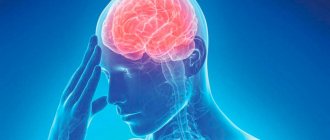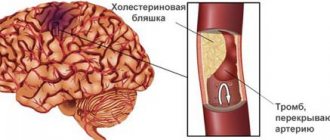How then to recognize pregnancy?
In fact, the first symptoms of pregnancy appear only a few weeks after conception.
Firstly, a woman may simply experience drowsiness, a feeling of exhaustion, a change in food preferences, or even nausea (which may not only be morning sickness). Although these symptoms are not always pronounced in expectant mothers, the most characteristic signs of pregnancy can be identified.
Namely:
- Implantation staining
(which can occur during implantation of the embryo into the uterus) This usually appears approximately seven days after conception. Sometimes this process is confused with menstruation; - Amenorrhea
is the symptom most associated with the possibility of becoming pregnant, but it should be remembered that stopping or delaying menstruation does not always mean conception; - Nausea and vomiting.
Usually appear in the first trimester of pregnancy. They are known as morning ones, but can occur at other times of the day or night; - Changes in appetite and dietary preferences
. The symptom means that, on the one hand, you will want to eat a certain type of food in excess, but at the same time you will experience an aversion to other foods. The condition may change constantly throughout pregnancy; - Sensitivity to certain odors
. One of the first symptoms of conception. It may worsen over time and disappear suddenly. This is not expressed in everyone, individually; - Tender, enlarged and firm breasts
due to the accumulation of estrogen and water. The network of blood vessels on the breasts may become more noticeable, the nipple areolas may become slightly darker, and the breasts themselves may become more sensitive to touch; - Drowsiness, fatigue and apathy.
They arise at this time due to the fact that the expectant mother shares a large amount of energy and nutrients with the baby. In addition, blood pressure drops in a pregnant woman’s body and it is recommended to sleep and rest as often as possible; - Frequent urination.
The symptom develops as a result of an enlarged uterus, which begins to put pressure on the bladder and increases the feeling of pressure; - Dizziness and fainting.
They can occur as a result of changes in blood circulation, as well as as a result of poor nutrition. You should definitely pay attention to proper nutrition; - Mood swings, irritability, tantrums or crying, anxiety
. Signs of pregnancy that may result from neurohormonal changes; - Abdominal pain
that sometimes resembles menstrual pain; - Increased body temperature
due to the action of progesterone and increased blood flow and metabolism; - Heartburn,
which in the case of pregnancy occurs primarily as a result of hormonal changes in the mother’s body; - Increased amount of vaginal discharge.
It results from increased estrogen production and increased blood flow around a woman's reproductive organs.
Changes in appetite and dietary preferences
These, of course, are not all the symptoms of pregnancy. If you want to make sure that fertilization has occurred, you can do a pregnancy test or contact a gynecologist, who will determine it during an examination. However, remember that it is not possible to determine pregnancy using a test or medical examination immediately after conception. It is pointless to make an appointment with a gynecologist and undergo an examination a few hours or the next day after sexual intercourse. A pregnancy test can give you an answer no earlier than 8 days after intercourse (when the ovulation period occurred). But even in this case, you cannot be 100% sure of the correctness of the result.
Breast changes: tingling, pain, growth
The period when breasts begin to grow during pregnancy occurs at 4-6 weeks. At this time, due to changes in hormonal levels, a woman may feel tingling, she may get the impression that her breasts have become heavier or larger, swelling has appeared, and sensitivity has increased.
These sensations during early pregnancy go away as soon as the body adapts to the new level of hormones.
By week 11, visual changes may become noticeable: an increase in breast size, enlargement and darkening of the areola (the area around the nipple).
Clue
- Don't be afraid of changes. To make it more comfortable, you can use breast care creams during pregnancy.
- Choose 1-2 comfortable bras. Cotton models with adjustable volume, without wires and lace inserts are very comfortable. They can be worn throughout the entire period of pregnancy and lactation.
- Use breast pads, such as bamboo ones. They are inserted into cups and reduce friction between underwear and skin.
What is fertilization and does it immediately mean pregnancy?
You already know how to recognize pregnancy, but it’s worth returning to conception for a moment. You may remember from biology class that fertilization is nothing more than the fusion of two reproductive cells called gametes. As a result of this connection, a completely new cell is formed, called a zygote. In humans, this is called the female and male gamete, that is, the egg and sperm.
Fertilization is possible through sexual intercourse between a woman and a man. At this time, the man's sperm must ejaculate into the woman's reproductive tract so that at least one sperm can reach the egg and enter it.
Under favorable conditions, when the sperm finds the egg, they merge within 24 hours. This is how the fertilization process begins. However, this moment does not immediately mean pregnancy. It is worth mentioning here that if the natural method of fertilization is not available for various reasons, then alternative methods of conception can be used.
Namely:
- An in vivo fertilization method that involves direct injection of properly prepared male sperm into a woman's reproductive tract;
- In vitro method, i.e. fertilization, which involves the union of male and female reproductive cells outside the female body.
The fertilization process itself may seem very simple. However, it is much more complex. For conception, only eggs and sperm are not enough. The right timing and the right conditions are still important for the combination of female and male cells to result in pregnancy.
Basal temperature measurement
Fluctuations in basal temperature reflect the course of the menstrual cycle. So, during the cycle this indicator is approximately 36.5⁰ C. When ovulation occurs, the temperature exceeds 37⁰ C and remains until the onset of the next cycle, falling to 36.5⁰ C the day before the onset of menstruation. However, if the egg is fertilized, the temperature does not drop, but remains at a level above 37⁰ C. This method cannot be called very reliable, since if a woman has hormonal disorders, temperature readings cannot have diagnostic value. In addition, temperature data can be affected by incorrect measurement, stress, overwork or climate change.
How does fertilization occur and when can we talk about pregnancy?
For fertilization to occur, certain conditions must be met. First of all, the fruitful meeting of egg and sperm depends on the quality of male sperm, which must be placed in the woman's vagina at the right time and under favorable circumstances. The right time is nothing other than the right moment in a woman's menstrual cycle.
You can have intercourse on any day, but despite your best efforts, not every intercourse results in conception. Fertilization is possible only in a certain phase of the cycle, that is, during ovulation and during fertile days.
Heartburn
Hormones can cause the valve between the stomach and esophagus to relax. This allows stomach acid to leak out, causing heartburn.
Before using heartburn medications (antacids), be sure to consult your doctor. Some antacids (drugs that reduce the acidity of gastric juice by neutralizing hydrochloric acid) can negatively affect the health of the unborn baby.
Clue
- Eat small meals several times a day.
- After eating, try to remain upright for about an hour so that the food can be properly digested.
- Do not take antacids without consulting your doctor.
When does a woman ovulate and when is she fertile?
The ovulation and fertile days calculator will help you determine the most convenient time to conceive. It is based on certain premises.
Assuming a regular menstrual cycle of 28 days, and fertile days falling in the middle of the cycle, ovulation should occur on day 14, and fertile days would be from days 10 to 18 of the cycle. These dates provide the best chance of getting pregnant.
However, it must be remembered that the duration of the menstrual cycle is an individual matter for each woman. Therefore, the calculation of ovulation and fertile days may vary. It is also important that the egg is ready for fertilization approximately 6-12 hours (sometimes 24 hours) after ovulation.
The second equally important issue is the quality of male sperm, which should contain a sufficiently large number of properly developed sperm. In order for male reproductive cells to easily pass through the mucous membrane and reach the egg, they must be able to move correctly.
One portion of ejaculate can contain up to 500 million sperm, and only one of them has a chance to fertilize the egg. The viability of sperm is limited and depends on many factors. For natural reasons, the best place for sperm to survive outside the male body is in the female genitals. Although here, too, various threats may lurk, and their path to the goal is quite difficult. If sperm reach the aforementioned periovulatory period, they can survive in the vagina for 72 hours, with the strongest specimens surviving for up to five or seven days. Thus, male gametes have the appropriate mucus consistency, which facilitates their movement, protects them from the acidic environment of the vagina and supports them with nutrients.
The ejaculate should move through the woman’s genital tract at a speed of about 5 m/s, i.e. 18 km/h.
For fertilization to occur:
- Male sperm must be of good quality, enter the female reproductive tract on time and be introduced at the right speed;
- A woman must be in a state just before ovulation or during her fertile days so that the reproductive tract environment is ready to receive sperm.
In addition, when trying to conceive a child, you should not focus only on calculating reproductive days. If you have trouble counting your fertile days, you can use ovulation tests to determine if your body's hormone levels indicate you are fertile.
When does a woman ovulate and when is she fertile?
It is important!
- You should see a gynecologist regularly in order, firstly, to detect pregnancy in time, and secondly, to track and eliminate the slightest irregularities.
- You can ask your gynecologist what other doctors you should visit. Endocrine disorders, metabolic problems, excess or underweight can affect conception.
Taking vitamins.
If your body doesn't have enough nutrients, your chances of getting pregnant may decrease. In the case of severe vitamin deficiency or lack of weight, menstruation, and with it ovulation, simply does not occur, that is, fertilization is impossible.
Fertilization and what next? Is this already pregnancy?
Assuming that all the conditions described above are met and the sperm reaches the egg, what happens next?
A zygote is formed by a combination of male and female gametes. Initially, it is one cell with 46 chromosomes. 23 come from sperm and the other half from the egg. Several tens of hours after fertilization, cleavage begins, that is, the process of dividing the zygote. First, the zygote is divided into two parts, and over time into an increasing number of cells. At the same time, it does not change its size, and the cells dividing inside it (the so-called blastomeres) become smaller and smaller.
After about 3-4 days of intensive divisions, the inner part of the zygote can already be filled with 12 or even 16 blastomeres. Then the zygote changes shape slightly and begins to resemble a mulberry fruit. At the same time, the zygote, protected by a special shell from the male gamete, begins its journey down the uterus.
About 7 days after fertilization, the zygote reaches the uterus, where the process of implantation begins, that is, implantation into the lining of the uterus. During implantation, which takes several days (4-5), one part of the zygote forms the embryo and the other the placenta. This is how the fertilization process ends and the embryonic process begins. If further processes go smoothly, in 9 months a new person will appear in the world.
Weight gain
Weight gain becomes noticeable towards the end of the first trimester. The gain can range from 500 grams to 2 kilograms in the first few months. Early pregnancy calorie needs are not much different from normal, but they will increase as pregnancy progresses.
At later stages, the weight is distributed as follows:
- chest (from 500 grams to 1.5 kilograms);
- uterus (about 1 kilogram);
- placenta (about 500 grams);
- amniotic fluid (about 1 kilogram);
- increased volume of blood and fluid (about 2-3 kilograms);
- fat (from 2.5 to 4 kilograms).
Why do nausea symptoms occur during pregnancy?
Although nausea and vomiting are not the most pleasant symptoms of conception, they are quite normal and even indicate the correct development of pregnancy. Pregnancy hormones (human chorionic gonadotropin - hCG), or rather their high concentration in the blood, are responsible for nausea during pregnancy.
It's also worth knowing that nausea, although commonly referred to as morning sickness, does not always occur in the morning. Nausea and vomiting as a result of fertilization may also occur in the evening and sometimes during the day or night.
MAKE AN APPOINTMENT
[contact-form-7 id=”296" title=”Untitled”]
Abortion and contraception clinic in St. Petersburg - department of the medical gynecological association "Diana"
Make an appointment, tests or ultrasound via the contact form or by calling +8 (812) 62-962-77. We work seven days a week from 09:00 to 21:00.
We are located in the Krasnogvardeisky district, next to the Novocherkasskaya, Ploshchad Alexander Nevsky and Ladozhskaya metro stations.
The cost of a medical abortion in our clinic is 3,300 rubles. The price includes all pills, an examination by a gynecologist and an ultrasound to determine the timing of pregnancy.
Fatigue
What other sensations are most often noted during early pregnancy? This is fatigue, lethargy and drowsiness. They can appear at any time, and this is quite normal. But at the very beginning, many women notice that they often want to lie down and it becomes more difficult to wake up.
This condition may be associated with several factors: an increase in the level of the hormone progesterone, a decrease in blood pressure, an increase in blood production, and a decrease in blood sugar concentration.
Clue
- Try to get enough sleep and follow a routine.
- Walk outside more and regularly ventilate the rooms you are in. Before going to bed, try to ventilate the bedroom.
- Add foods high in iron and protein to your diet.
Is position important during conception?
This question remains open. Some argue that a couple should have sex in the missionary position, while other women believe that the position when the partner is from behind is also suitable for successful conception of a child. There is also disagreement about how “turbulent” intimacy can be. Female orgasm leads to contraction of the vaginal muscles, which promotes the rapid movement of sperm. But scientists have not found evidence that the position and intensity of sex affects the likelihood of conception.
What happens to the embryo at 2 weeks
A child at 2 weeks of pregnancy is not yet a fetus, but only one small cell that has just attached to the endometrium and is beginning to rapidly grow and divide. A genome is formed inside it - biological information that will determine the external image and developmental characteristics of the unborn child.
If a malfunction occurs and the set of chromosomes turns out to be incorrect, the zygote will not be able to attach to the wall of the uterus and will leave the body along with uterine bleeding. This will be a normal menstruation for you, but this is how the natural mechanism of selecting viable cells works.
Let us repeat that all this applies to the embryonic method of calculating gestational age.










